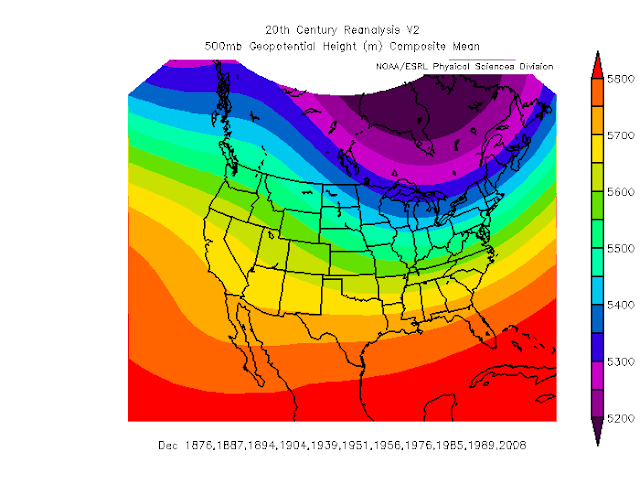Here's the snowfall map and specific amounts from our NWS spotters. Here in northern Livonia, I received 6.2" total with some foot drifts.
Snowfall totals from the December 26-27th, 2012, Winter Storm
PUBLIC INFORMATION STATEMENT...STORM TOTALS
NATIONAL WEATHER SERVICE DETROIT/PONTIAC MI
1053 AM EST THU DEC 27 2012
THE NORTHWEST FLANK OF A SIGNIFICANT WINTER STORM IMPACTED POST
HOLIDAY TRAVEL ACROSS SOUTHEASTERN MICHIGAN ON DECEMBER 26TH.
WIDESPREAD SNOW LIFTED ACROSS THE MICHIGAN-OHIO STATELINE DURING THE
LATE MORNING HOURS...ARRIVING OVER PORTIONS OF THE I 69 CORRIDOR
DURING THE MID AFTERNOON. WHILE THE STORM SYSTEM TRACKED THROUGH THE
TENNESSEE VALLEY TRANSFERRING ENERGY TO THE EAST COAST DURING THE
AFTERNOON...AN AXIS OF ENHANCED MOISTURE BECAME ANCHORED OVER MUCH
OF SOUTHEASTERN MICHIGAN THROUGHOUT THE EVENING. BY DAWNBREAK OF
DECEMBER 27TH...A GENERAL 4 TO 7 INCHES OF SNOWFALL FELL SOUTHEAST
OF A LINE FROM BAD AXE TO MANCHESTER...WITH AMOUNTS IN EXCESS OF 10
INCHES COMMON FOR LOCATIONS IN EASTERN ST CLAIR AND SANILAC COUNTIES
ADJACENT TO LAKE HURON.
STORM TOTAL SNOW REPORTS
LOCATION SNOWFALL DURATION
(INCHES) (HOURS) LAT LON
...BAY COUNTY...
2 NE AUBURN M 0.9 14 43.62N 84.05W
...GENESEE COUNTY...
LINDEN M 3.0 14 42.82N 83.78W
BURTON M 4.0 14 43.00N 83.62W
GOODRICH M 4.4 14 42.92N 83.51W
FLINT M 5.0 14 43.02N 83.69W
4 N BURTON M 6.0 14 43.05N 83.62W
...HURON COUNTY...
PORT HOPE M 0.8 14 43.94N 82.72W
5 NNW FILION M 1.1 14 43.96N 83.04W
PORT AUSTIN M 2.0 14 44.04N 83.00W
BAD AXE M 4.5 14 43.80N 83.00W
...LAPEER COUNTY...
LUM M 4.5 14 43.10N 83.15W
LAPEER M 4.6 14 43.05N 83.32W
NORTH BRANCH M 5.8 14 43.23N 83.19W
...LENAWEE COUNTY...
MORENCI M 3.4 14 41.72N 84.22W
TECUMSEH M 3.4 14 42.01N 83.94W
ADRIAN E 3.5 14 41.90N 84.04W
2 WNW TIPTON M 3.8 14 42.03N 84.10W
1 SW BLISSFIELD M 4.0 14 41.82N 83.88W
...LIVINGSTON COUNTY...
HOWELL M 3.5 14 42.61N 83.94W
...MACOMB COUNTY...
1 NNW UTICA M 4.9 14 42.64N 83.03W
SSE SHELBY TOWNSHIP M 5.2 14 42.67N 83.03W
4 NNW RICHMOND M 7.7 14 42.86N 82.78W
...MONROE COUNTY...
MONROE M 2.7 14 41.92N 83.39W
MONROE M 2.8 14 41.92N 83.39W
3 SW MONROE M 3.8 14 41.89N 83.43W
3 SW MONROE M 3.8 14 41.89N 83.43W
DUNDEE M 4.5 14 41.96N 83.66W
...OAKLAND COUNTY...
WEST BLOOMFIELD M 4.0 14 42.57N 83.38W
2 SE ROYAL OAK M 4.3 14 42.49N 83.13W
HOLLY M 4.4 14 42.80N 83.62W
2 SE HOLLY M 4.5 14 42.78N 83.59W
FARMINGTON M 4.5 14 42.46N 83.38W
BLOOMFIELD HILLS M 6.0 14 42.58N 83.25W
2 NW WATERFORD M 6.2 14 42.68N 83.42W
4 SW MILFORD M 6.5 14 42.54N 83.66W
5 ESE HOLLY E 7.0 14 42.78N 83.53W
CLARKSTON M 7.0 14 42.74N 83.42W
MADISON HEIGHTS M 7.0 14 42.50N 83.10W
WHITE LAKE M 7.3 14 42.65N 83.50W
3 S LAKEVILLE M 7.8 14 42.78N 83.15W
3 SW LAKE ORION M 8.8 14 42.75N 83.29W
...SAGINAW COUNTY...
5 S MERRILL M 0.5 12 43.34N 84.34W
2 E MERRILL M 1.0 14 43.41N 84.30W
SAGINAW M 1.5 14 43.42N 83.95W
CHESANING M 1.6 14 43.18N 84.12W
...SANILAC COUNTY...
SANDUSKY M 4.0 14 43.42N 82.83W
MARLETTE M 4.5 14 43.33N 83.08W
CROSWELL M 7.0 14 43.27N 82.62W
LEXINGTON E 7.0 14 43.27N 82.53W
LEXINGTON M 7.0 14 43.27N 82.53W
...SHIAWASSEE COUNTY...
OWOSSO M 1.0 14 43.00N 84.18W
2 NE CORUNNA M 2.2 14 43.00N 84.09W
DURAND M 3.0 14 42.91N 83.99W
...ST. CLAIR COUNTY...
1 NNW YALE M 6.5 14 43.14N 82.80W
2 W ALGONAC E 6.5 14 42.62N 82.57W
MARINE CITY E 7.0 14 42.71N 82.50W
3 E RICHMOND M 7.7 14 42.81N 82.70W
2 W PORT HURON M 11.1 14 42.99N 82.47W
3 W LAKEPORT M 14.0 14 43.12N 82.56W
...TUSCOLA COUNTY...
CARO M 3.0 14 43.49N 83.40W
VASSAR M 3.5 14 43.37N 83.58W
...WASHTENAW COUNTY...
SALINE M 2.8 14 42.18N 83.78W
1 W ANN ARBOR M 5.5 14 42.28N 83.75W
2 NNW ANN ARBOR M 5.5 14 42.30N 83.75W
MANCHESTER M 5.6 14 42.15N 84.04W
ANN ARBOR M 5.8 14 42.28N 83.73W
SE ANN ARBOR M 6.0 14 42.28N 83.73W
2 WNW ANN ARBOR M 6.3 14 42.29N 83.77W
SALEM M 6.4 14 42.41N 83.58W
CHELSEA M 6.5 14 42.31N 84.02W
ANN ARBOR M 6.9 14 42.28N 83.73W
...WAYNE COUNTY...
4 NE DEARBORN M 3.5 14 42.35N 83.16W
DEARBORN M 3.5 14 42.31N 83.21W
N LIVONIA M 6.2 14 42.40N 83.37W
2 NNW LIVONIA M 3.8 14 42.42N 83.39W NORTHVILLE M 5.2 14 42.44N 83.49W GARDEN CITY M 5.4 14 42.33N 83.33W ROMULUS M 6.2 14 42.22N 83.37W RIVERVIEW M 6.3 14 42.17N 83.19W WYANDOTTE M 6.3 14 42.21N 83.16W GROSSE POINTE FARMS M 6.8 14 42.40N 82.89W
__________________________________________________________________________________



















